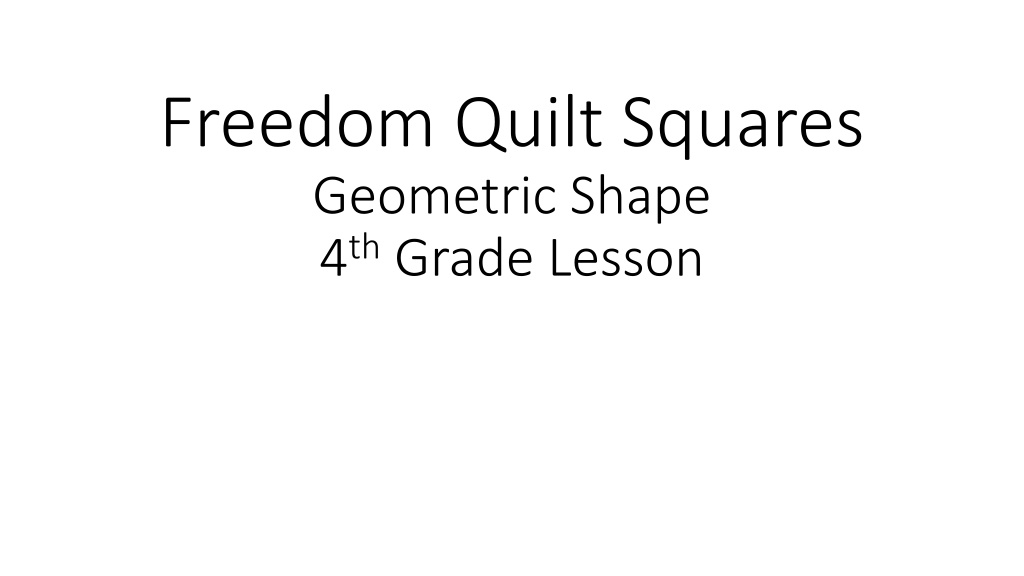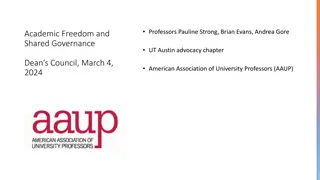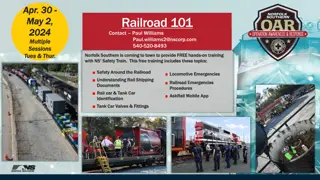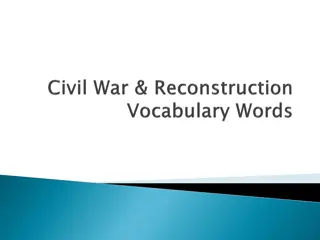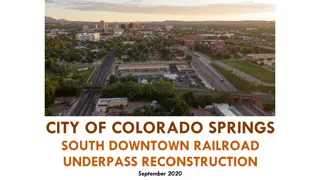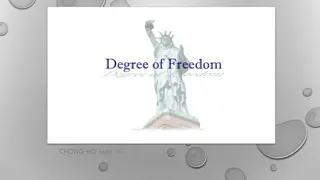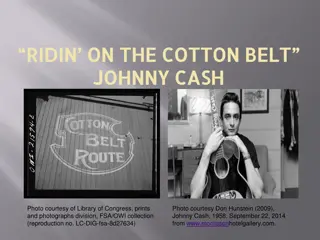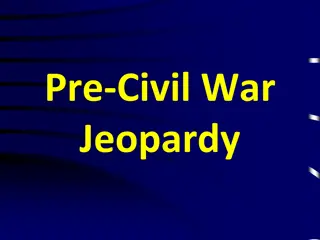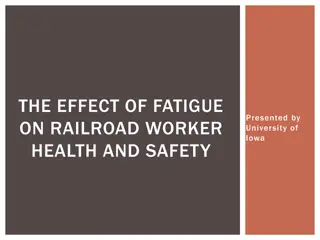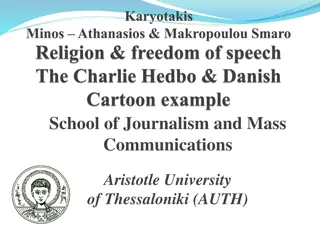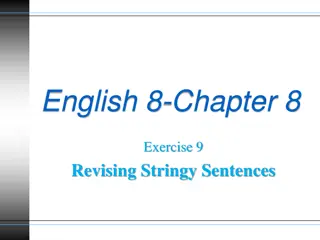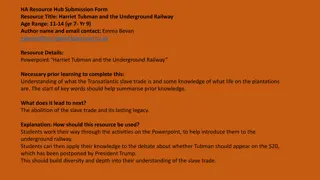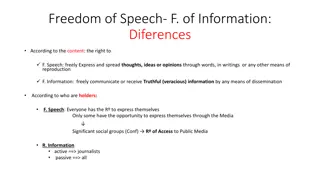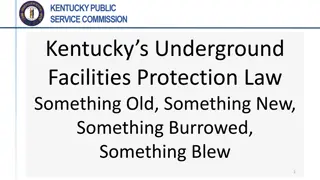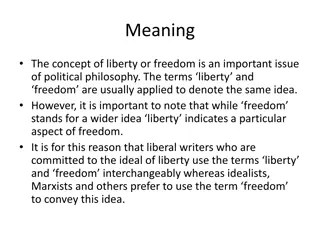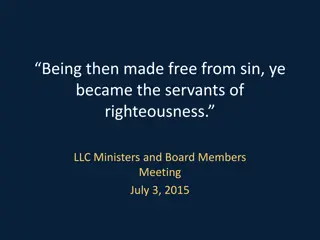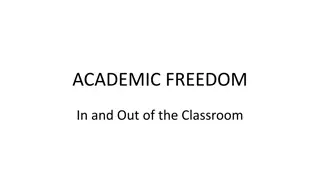Understanding the Underground Railroad Through Freedom Quilts
The Underground Railroad was not an actual railroad but a network of secret routes used by black slaves to escape to freedom. Freedom quilts played a crucial role as signals for the slaves, with specific patterns carrying hidden messages to guide their journey to safety. Seamstresses created sampler quilts to help slaves memorize the codes, enabling them to escape successfully. These quilts served as a vital tool in the fight against slavery, ensuring the safe passage of many to freedom.
Download Presentation

Please find below an Image/Link to download the presentation.
The content on the website is provided AS IS for your information and personal use only. It may not be sold, licensed, or shared on other websites without obtaining consent from the author. Download presentation by click this link. If you encounter any issues during the download, it is possible that the publisher has removed the file from their server.
E N D
Presentation Transcript
Freedom Quilt Squares Geometric Shape 4thGrade Lesson
The Underground Railroad The Underground Railroad was a network of secret routes and safe houses used in the 19thcentury by black slaves in the U.S. to escape to either free states or Canada. It was not a real railroad and was not really underground. Underground meant secret, and railroad meant hidden . Stations was code meaning the resting spots where they would sleep and eat during the day to avoid being captured by slave hunters. Many people associated with the underground railroad only knew their small part of the operation and not the whole scheme.
Hundreds of slaves obtained freedom to the North every year. The conductors who moved the runaways from station to station would sometimes act as if they were actually a slave and enter a plantation, then they would direct the fugitives to the North. The slaves would travel about 10-20 miles per night sometimes by boat, train or wagon, but mostly on foot. When they would stop at the stations or depots , a message was sent to the next station to let the station master know the runaways were on their way. Money was donated by people to help buy tickets and clothing for them so they could remain unnoticeable. Many escaped via the railroad and lived as free men, then they would late purchase their wives, children and other family members out of slavery.
People who helped the slaves find the railroad were referred to as agents . Stationmasters hid the slaves in their homes. Escaped slaves were referred to as passengers or cargo . The railroad itself was often know as the freedom train or gospel train .
Freedom Quilts Many believe in the use of quilts during the Underground Railroad days. Known as the Freedom Quilt patterns, these quilts were displayed as signals to slaves that they should begin to pack for the journey (wagon wheel), dress up (shoofly) and get ready to escape (tumbling blocks). Quilts were also used to alert fugitive slaves to food (bear s paw), the way north (star) and danger (log cabin). Because quilts were such an American tradition, they could be hung on porches or displayed on fences without attracting attention.
A plantation seamstress would sew a sampler quilt containing different quilt patterns. Slaves would use the sampler to memorize the code. The seamstress then sewed ten quilts, each composed of one of the code s patterns. The seamstress would hang the quilts in full view one at a time, allowing slaves to memorize the pattern and associate the meaning. When slaves made their escape, they used their memory of the quilts to guide them safely along their journey.
Harriet Tubman Harriet Tubman was a runaway slave from Maryland who became as the Moses of her people. Over the course of 10 years, and at great personal risk, she led hundreds of slaves to freedom along the underground railroad.
Shape Shape is one of the basic elements of art, along with line, texture, color and composition. Geometric shapes are man-made. They include mathematical shapes like squares, rectangles, cubes, circles, spheres, triangles and cones. Organic shapes are found in nature. They have a natural look and may have sides that are lopsided, curvy, uneven or imperfect. Examples of organic shapes are leaves, clouds, animals and rocks. Repeated shapes create a pattern and give a feeling of texture. Today we ll be working with geometric shapes.
Making Freedom Quilt patterns Today we will be replicating the freedom quilt square patterns. Every student will need: 12 x 12 square piece of paper 2-3 pieces of 6 x 6 scrapbook paper glue stick scissors ruler pencil folding instructions
There are 5 folding patterns to choose from: Bow Tie Flying Geese Crossroads Star Wagon Wheel
Start by dividing your large patterns into 4 - 6 x 6 squares using your ruler and a pencil. Press lightly with the pencil as these marks will be erased later. Choose up to 3 kinds of scrapbook paper. They should coordinate somehow. You could use warm or cool colors, complimentary colors or analogous colors. Follow the directions for the chosen quilt pattern. Use the patterned paper for folding. Once folded, cut out along the lines. Arrange the various shapes into the quilt pattern. Glue the shapes in place only after you are done arranging them. Erase pencil lines. Put name on the back of paper.
